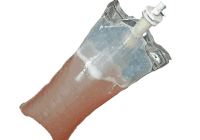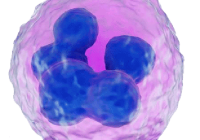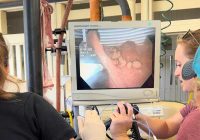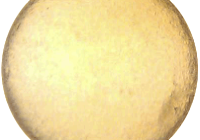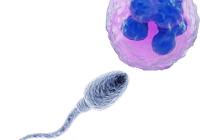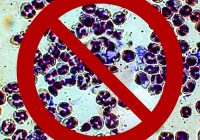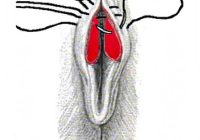Clean Culture and Cytology – Perhaps Not So Clean? For many years, the standard pre-breeding evaluation included a uterine swab culture alone. It was then determined that allegedly “clean” mares were not becoming pregnant, and further investigation showed that there were inflammatory cells present in the uterus, indicating some sort of irritant – usually a pathogen missed with… Read More »
Ozonated Sunflower Oil for Endometritis Treatment The overuse of antibiotics in medicine today – including equine reproduction – has led to searches for alternative novel treatment for endometritis in the equine, as well as in many other facets of the medical field. In human medicine and dentistry, ozone has been shown to be capable of killing Gram-positive and… Read More »
Is it Possible to Cause Earlier Regression of the Endometrial Cups to Permit a Return to Breedable Estrus in the Mare? Unique to the early equine pregnancy is the invasive trophoblast of the chorionic girdle and its formation of the endometrial cup cells which secrete equine chorionic gonadotropin (eCG). This invasion occurs between days 35–38 after ovulation. The… Read More »
Does Routine Monitoring for EVA Make a Difference? With the announcement this week of an outbreak of equine viral arteritis in PEI in Canada, a very reasonable question to ask is “does routine monitoring for EVA make a difference?” At the recent ISER meeting in Brazil, Kaps et al. reviewed the effects of monitoring and management practices on… Read More »
Canadian Equine Viral Arteritis! There has been an EVA outbreak in Canada reported in Prince Edward Island. Equine Viral Arteritis is predominantly a respiratory disease, which has reproductive implications. Symptoms vary dramatically from none (“asymptomatic”) to a wide variety which may present as any combination of the following: elevated temperature, depression, loss of appetite. Affected animals may also… Read More »
Endometrial Biopsy in the Mare – is one sample enough? An endometrial biopsy in the mare is a useful diagnostic to determine cellular health of the uterine lining which will be directly responsible for pregnancy maintenance once placentation has occurred. The biopsy score is correlated to the likelihood of live foal production by use of different scales, such… Read More »
Improve Pregnancy Rates in Older Subfertile Mares! How can one improve pregnancy rates in older subfertile mares? This category of mare is notorious for having lower pregnancy rates, and this becomes even more annoying when one is performing a higher-cost procedure such as embryo transfer. A perennial question therefore is “can we improve pregnancy rates in those older… Read More »
Dead Sperm Do Not Cause Greater Uterine Immune Response! We know that sperm are the primary instigator for initiating the mare’s post-breeding uterine inflammatory response[1], but one not infrequently hears commentary to the effect of concerns that there may be a greater response if the insemination dose contains a higher number of dead sperm. Cousseau et al have… Read More »
Obese Mares Have More Problems Than We Thought! It has been previously documented that obese mares have a higher tendency towards early embryonic death, particularly in hot weather and this has been put down to the core temperature of these mare potentially being higher than other mares, with a negative impact on embryo survival[1]. At ISER XIII Meikle… Read More »
Vulval Conformation, Common Vulval Injuries and the Caslick’s Procedure – Vulval Conformation and the Caslick’s Procedure are important aspects to consider, especially when breeding older multiparous mares By Jonathan F Pycock, BVetMed, PhD, DESM, MRCVS, RCVS Specialist in Equine Reproduction In the normal mare the vulva provides the first effective barrier to protect the uterus from ascending infection.… Read More »

